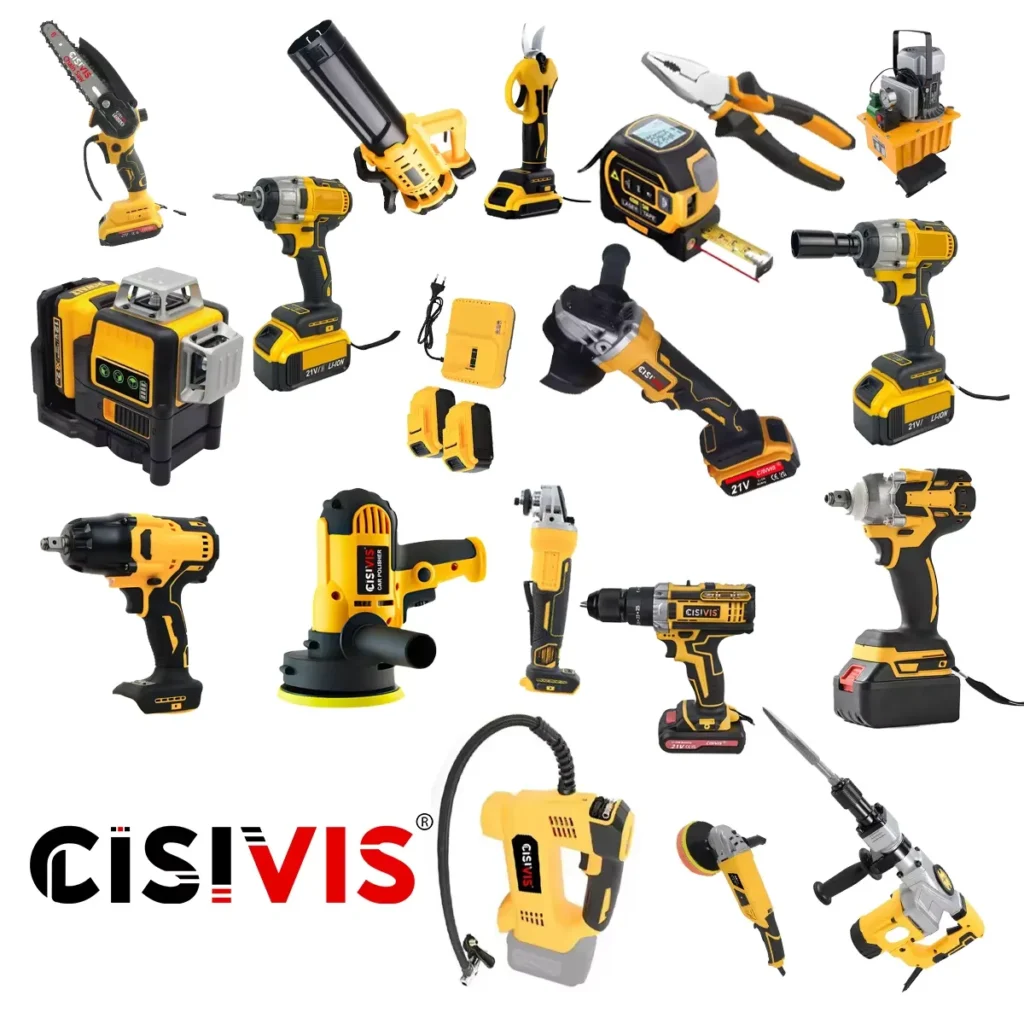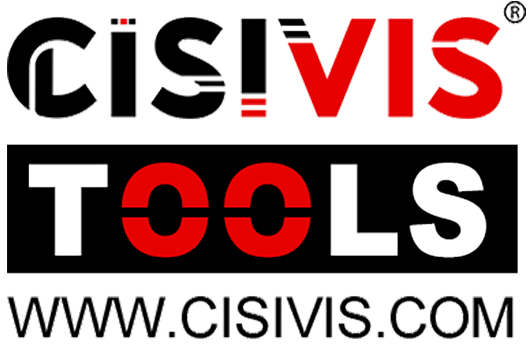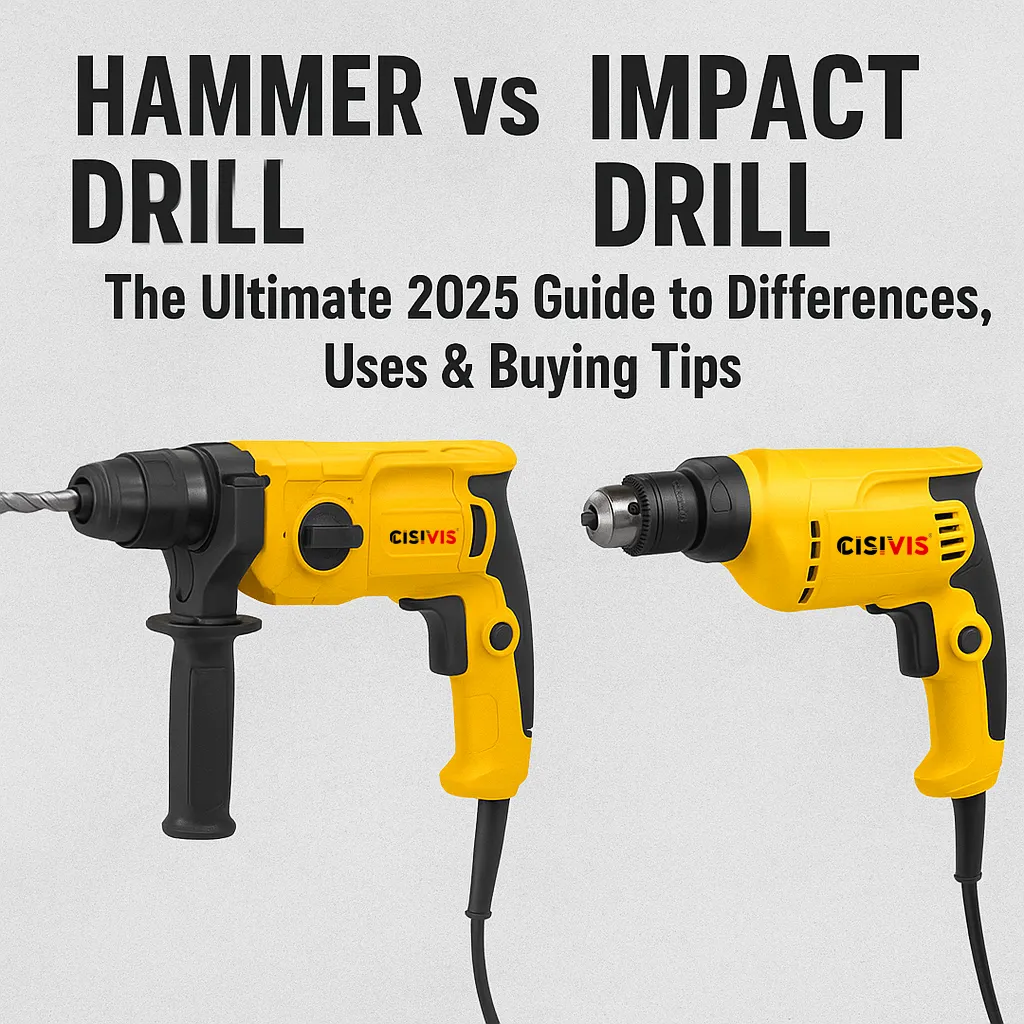Impact Drill vs Hammer Drill: What’s the Difference and Which One Should You Buy in 2025? Leave a comment
Definitions and Development Trends
When we talk about impact drill vs hammer drill, it’s important to begin with what each tool is, and how their usage has evolved.
Hammer drill: A hammer drill is a power drill that, in addition to the rotary motion, adds a forward-and-back “hammering” action (percussion) to its bit when set to hammer mode. The percussion helps to break up hard materials like masonry or concrete. The historical development of the hammer drill went back many decades: for example, the first “hammer drill” with an electro-pneumatic striking mechanism was patented in 1914. A study of hammer drills in construction recognized that the hammering/rotating combo allows drilling into concrete and masonry more efficiently.
Impact drill (or more precisely, impact driver/impact drill): While often the term “impact drill” is used broadly, technically an impact driver uses rotational impacts (a hammer/anvil mechanism that delivers bursts of torque) to drive screws or fasteners, rather than the forward percussion of a hammer drill. A blog post compares these mechanisms in detail: “In comparison, a hammer drill doesn’t have the impact mass component and anvil… When you set [the drill] to hammer mode, the drill’s transmission shifts into a percussive ‘forward’ motion while the chuck spins.”
Development trends:
- As materials and job-site demands have increased (harder masonry, more concrete, retrofit jobs), tools with higher impact or hammering capacity have emerged. For example, in heavy drilling operations in mining, increased blow energy of down-the-hole hammers has been studied.
- For end-users (DIY, tradespeople), the proliferation of cordless brushless motors, better battery technology, and multi‐function tools (drill/hammer/impact) means the “impact drill vs hammer drill” decision is more relevant—users want clarity on what tool to buy for which job.
In short: when you search for impact drill vs hammer drill, you are comparing two different types of tool action and application, each with its own evolution and role.
Impact Drill vs Hammer Drill: Key Differences, Buying & Practical Tips, Maintenance & Pitfalls
Let’s break down the differences between hammer drills and impact drills, then move into how to choose, how to use them in practice, how to maintain them, and common pitfalls to avoid.
Differences (impact drill vs hammer drill):
- Purpose / Usage: A hammer drill is intended for drilling holes into hard materials (concrete, masonry) by combining rotation + percussive blows. An impact driver (or “impact drill”) is optimized for driving fasteners (screws, bolts) with high torque bursts; drilling holes is secondary. The impact drivers are much smaller, lighter, and better in tight places.
- Function / Mechanism: A hammer drill uses a mechanism to push the bit forward/back rapidly while spinning (hammer + drill). An impact driver uses internal hammering of torque (rotational impacts) rather than forward hammering.
- Price / Size / Ergonomics: Impact drivers are typically more compact and may cost less than heavy hammer drills designed for masonry. Conversely, hammer drills may be heavier (due to percussion mechanism) and cost more for dedicated masonry functions. Impact drivers are typically much smaller, shorter and lighter than hammer drills.
Buying Tips (choosing between impact drill vs hammer drill):
- First ask: What kind of job will you mostly do? If you will drill into concrete/masonry often, a hammer drill makes sense. If you mostly drive screws/fasteners (e.g., framing, decking), an impact driver is likely more efficient.
- Consider ergonomics: If space is tight (e.g., inside cabinets, near joists) the compact size of an impact driver may be a big plus.
- Battery/cordless compatibility: If you already have a compatible battery platform, that may influence your decision.
- Versatility: Some combos offer both hammer drill and impact driver in one kit (so you might not have to choose strictly).
- Brand/quality: For heavy duty masonry drilling, invest in a higher‐quality hammer drill with good percussion mechanism and durable build.
- Price vs purpose: Don’t overspend on a hammer drill if you seldom drill masonry; likewise don’t under-invest if you’ll use it for serious concrete work.
Practical Use Tips (for impact drill vs hammer drill):
- For hammer drilling: Use correct masonry bit, apply steady pressure (but don’t force excessively), start slow to get the bit seated, let the tool do the work.
- For impact driving: Use impact-rated bits (they’re tougher), let the tool drive the fastener without forcing too much extra.
- Switch modes: Some hammer drills also have regular drill mode—use that for wood/metal so you’re not hammering unnecessarily.
- Use correct accessories: Bits designed for masonry for hammer drills; fastener bits rated for impact drivers.
- Safety: Wear eye protection, ear protection (hammer drills can be loud/vibrating) and ensure stable footing.
Maintenance & Avoiding Pitfalls (impact drill vs hammer drill):
- For hammer drills: The percussion mechanism increases wear. Check bits frequently, clean out dust from the chuck/hammer mechanism. Overuse in wrong material (like using hammer mode in wood) can damage the bit or tool.
- For impact drivers: Though less percussion on the bit than hammer drills, they deliver high torque. Using wrong bits or over-torquing can strip fasteners or damage work.
- Make sure the tool is rated for the battery/usage you’re giving it.
- Avoid using a hammer drill when a regular drill would suffice (extra vibration, unnecessary wear). A forum comment says:“A hammer drill is not the right tool to drill concrete and brick. A SDS Plus drill will drill about 6 inches deep in the time a hammer drill takes to just start the hole.”
- Store tools clean, keep bits sharp, check for excessive vibration or unusual behavior which could signal internal wear.

Frequently Asked Questions about Impact Drill vs Hammer Drill
Here are common questions readers often ask when debating “impact drill vs hammer drill”, with clear answers.
Q1: Can I use an impact driver for drilling holes into concrete?
A: Generally no, or only poorly. An impact driver is optimized for driving fasteners, not for forward-hammering through masonry. You will get slower performance, more bit wear, and possibly damage. Use a hammer drill for concrete.
Q2: Can a hammer drill drive screws like an impact driver?
A: While you can in many cases, it’s not ideal. Hammer drills lack the burst-torque mechanism and may strip fasteners or be less efficient. For driving screws, an impact driver is superior.
Q3: My budget is limited — should I buy one tool that does both?
A: If your tasks are light and varied, a good combo kit (hammer drill + impact driver) may be a practical solution. But if you will often drill masonry or drive large fasteners, specialized tools will give better results.
Q4: What should I look for in the specifications when comparing impact drill vs hammer drill?
A:
- For hammer drills: Blow rate (BPM – blows per minute), hammering energy, variable modes (drill/hammer), ergonomics, vibration control.
- For impact drivers: Torque rating, bits compatibility (hex shank), speed settings, compactness.
- For both: Battery platform (if cordless), durability, brand/service.
- Also check support for attachments, maintenance ease, bit change mechanism.
Q5: How do I avoid “buyers remorse” when choosing between impact drill vs hammer drill?
A: Clarify your most common tasks now and in near future. If drilling into concrete/masonry will be rare, don’t overspend on a high-end hammer drill. If driving many screws/bolts is your frequent task, don’t buy a heavy hammer drill thinking it will “cover everything”. Read reviews, test weight/ergonomics if possible, check accessory requirements and battery compatibility.
Top Two Hottest Tools in 2025 + Our Brand Recommendation
Here are two of the most popular tools in the market this year for impact drill vs hammer drill style applications — plus one from our company (CISIVIS) so you can see what we offer.
- DEWALT 20V MAX XR Hammer Drill/Impact 2‑Tool Combo Kit: This kit from a leading brand offers a ½″ hammer drill and a ¼″ impact driver in one package. Great for users who want both functions.
- HERCULES 20V Brushless Hammer Drill & Impact Driver 2‑Tool Combo Kit: A slightly more budget-friendly brushless combo kit that still delivers decent hammering capacity (e.g., 32,000 blows per minute in the hammer drill) and impact driving.
- Hammer Drill/Impact Driver Cordless Combo Kit: This shows an example of a more budget “combo” variant (may not have brand prestige, but gives basic hammer and impact functionality).

From CISIVIS: our impact drill vs hammer drill offerings include features such as digital battery read-out, brushed or brushless motor options, some models with copper motor windings (for better durability), over-heat protection, and we support both OEM & ODM customization. If you’d like, I can send you our specific model spec sheet and pricing for 2025.
Summary
In the debate of impact drill vs hammer drill, there is no one “winner” — the right tool depends on your work. If you frequently drill into concrete or masonry, a hammer drill is the tool designed for that purpose. If you mostly drive screws or fasteners (wood, metal), an impact driver (or “impact drill”) is more efficient, compact, and suited. Buying decisions should be guided by your typical tasks, ergonomics, battery/platform strategy, and the quality of the tool. Proper usage and maintenance will extend tool life and performance, while avoiding the common pitfall of “wrong tool for the job”. In 2025 you’ll find many combo kits that cover both hammer and impact functions, giving flexibility.
At CISIVIS, we specialize in producing high-quality hammer drills and impact drivers with customizable features (digital battery display, copper motor winding, over-heat protection, brushless motors) and support both OEM and ODM. If you’re looking for a partner or sourcing for your own branding, feel free to reach out.



